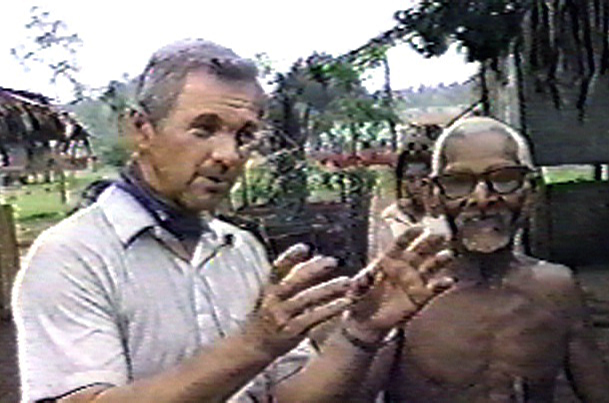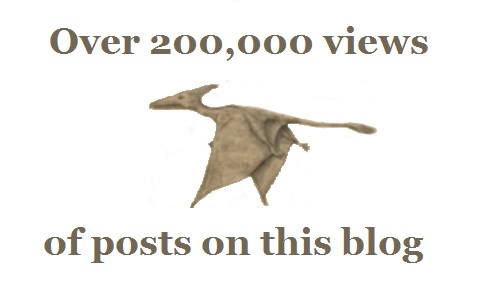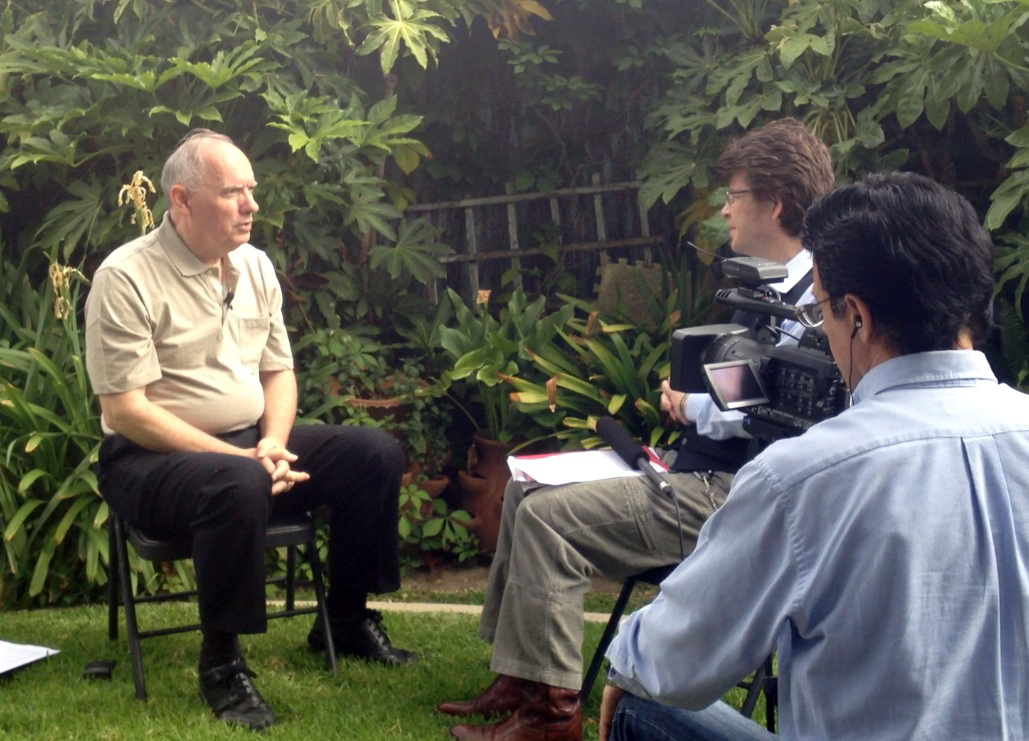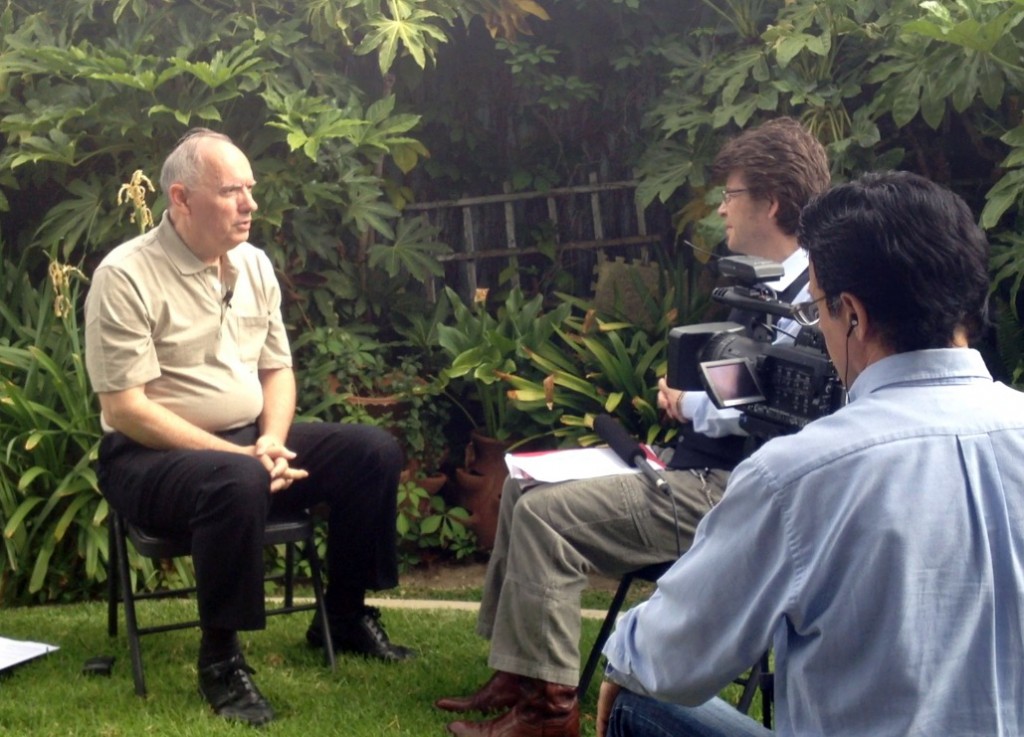To some Americans and other Westerners, Umboi Island is known as the home of the ropen, reported to be a large long-tailed surviving pterosaur (Rhamphorhynchoid type), also called pterodactyl. Yet most Westerners have never heard of Umboi Island, even those who know that Papua New Guinea is an independent nation of islands between Australia and the Philippines. The following should be informative.
I recently got an email from a young man who asked seventeen questions about Umboi Island. At first, I was reluctant to give him any information until I knew his intentions, for it sounded like he wanted to go on an expedition there, to search for ropens. His questions were inadequate to prepare him for such a dangerous adventure, even if all of them were answered adequately.
He then told me that he was a high school student (perhaps with fewer years of life than the number of questions he was asking) and had no intention or ability to go on an expedition on Umboi Island. After he told me he was writing a novel, I felt that it was safe to give him the following answers, which are slightly edited in this post:
Question-1: Do most of them [natives on Umboi Island] speak English or is Tok Pisin more dominant (if at all)?
Answer-1: Tok Pisin is probably used more than English when the natives are communicating with each other. But within a village, the local language is used. A number of these local languages exist on Umboi. When a visitor comes from an English-speaking country like the USA or Australia (which is rare), then some of the natives will try to communicate in English or in a mixture of English, Pisin, and village-language words. Be aware, however, that most natives know very little English, if any, or they do not get enough practice in English to be able to use it if it’s needed.
Question-2: [Is] the estimated population around 15,000?
Answer-2: 15,000 population seems a little high to me, but I only explored a small part of the island in 2004. An average village might have about 150-300 persons living in it, but a few other huts may be found around a typical village.
Question-3: Is the island frequented by tourism and how is the overall opinion of this matter by the locals?
Answer-3: Rarely will a foreign tourist visit Umboi. Maybe a few natives from the mainland will visit Umboi on occasion, or from other smaller islands in the area, but many of those visitors will be natives who originally lived on Umboi and are just returning to visit relatives or friends.
Question-4: How is the infrastructure on the island? I’ve seen on google maps that they have at least one airfield, but how is it with cars, roads, electricity and communication (cell phone and satellite phone)?
Answer-4: The air field is not regularly maintained and is rarely used. If a native wants to communicate with someone on the other side of the island, he or she will walk there. Cars seem to be rare, except that two or three may be operating in or near Lab Lab (I was given a ride in a pickup there). Broken down bridges are not generally repaired, so cars have limited use.
Question-5: How diverse are the different cultures on the island itself?
Answer-5: Natives walk from one village to another [so ideas and attitudes can be shared]. I saw three churches in or near Gomlongon Village: Catholic, Baptist, and another Protestant one. To outsiders, however, many villages may look very similar.
Question-6: On your ropen blog, you mentioned that the inhabitants had strict property and trespassing laws, and that they had “man traps” as well. Would you say that the inhabitants would take violent actions against trespassers? Where you ever told any tales of punished trespassers?
Answer-6: The man traps were meant to keep native thieves from stealing a battery on Mount Bel. The battery was for powering a radio tower. In general, village leaders resent uninvited trespassers on what they consider their property, but my experience is that threats are more common than actual violence when outsiders are accused of trespassing.
Question-7: I’ve seen on google maps, two villages at the coastline (at the only part with high enough resolution to see them), are most villages at the coast or 50/50 coast-inland?
Answer-7: I have not explored all of Umboi, only mostly around Gomlongon and Opai villages and one other village near Mount Tolo (what is called “Mount Tangulop” on maps but that’s a mistake on the maps). Maybe half of the villages are on the coast, but I’m only guessing. I believe that malaria is more common on the coast than in the inland villages that are higher in elevation. Mosquitos are uncommon in Gomlongon. [I was giving my reasons why I thought so many natives live in higher elevations on this island, but I did not get into that reasoning in my answer to this high school student: Gomlongon Village is less hot in the evening than coastal villages and mosquitos appeared, to me, to be far less common up in the interior.]
Question-8: How is their will/opinion on modernization? Or are they more inclined to continue a more traditional life?
Answer-8: In Gomlongon and Opai, they are happy to use whatever technology they can get, if it’s not expensive.
Question-9: On google maps there seem to be vast areas of lighter green (especially one place in the south), is this an indication of open grass fields/low bushlands?
Answer-9: Some of the rain forest has been cut down [or burned off] for cultivation of crops.
Question-10: Is there any significant import and export of wares?
Answer-10: They have limited access to money. Crops are difficult to move because of the broken bridges. They have crops to sell but no easy way to get them out of their areas to where they could sell them.
Question-11: What’s the environment like? Welcoming? Harsh? Wet? I’ve read that it’s a temperate rain forest, is that true?
Answer-11: This is a tropical rain forest. It’s hot and humid on the coast, but up higher in elevation, inland like at Gomlongon and Opai, you can get some relief with a pleasant breeze in the evenings. Whenever you go higher in elevation you get lower temperatures, although the humidity may not change much: It’s still humid.
Question-12: How did you get to Umboi? Specifics would be nice. Example: You went to the San Diego Airport, flew to Lae, then took a boat to the island.
Answer-12: I took a flight from Los Angeles to New Zealand. I later took a flight from NZ to Cairns, Australia. From AU, I flew to the capital of Papua New Guinea, which is Port Moresby. My last flight was to the city of Lae (PNG). I waited a few days in Lae for when a ship would [take me] to Umboi.
Question-13: What are their villages like? Are the houses sturdy? Are the people nice?
Answer-13: Read my book: the fourth edition of Searching for Ropens and Finding God.
Question-14: What food did they commonly eat? What food is considered a delicacy to them?
Answer-14: Locally grown food mostly. Coconuts are so common that they have tired of eating them. [See #13]
Question-15: Do you know the PNGs government interest in the island? Is it just another island to them or is it the crown jewel?
Answer-15: See #13
Question-16: What’s most unique about this island? Besides the fact that there might be a living fossil that lives there.
Answer-16: Umboi appears to be similar to many other islands in PNG. [In fact, ropens may live on many islands of Papua New Guinea, for these large long-tailed pterosaurs are mostly nocturnal and relatively rarely seen by people in daylight.]
Question-17: Have you ever heard or encountered of people that have misinterpreted some kind of bird for being a juvenile ropen? [meaning people may have seen a bird but thought it was a ropen]
Answer-17: The natives know the local wildlife. They do not make a mistake like misidentifying a ropen or a bird or a Flying Fox fruit bat.
Conclusion
I wish the young man success in writing his fiction book. The ropen, however, is real.
###
Umboi Island, Papua New Guinea
In the non-fiction book Searching for Ropens, the cryptozoological investigations of this creature are analyzed and compared with standard models that are popularly taught regarding science.
American cryptozoology author Jonathan Whitcomb believes the ropen of Umboi is related to the “Gitmo Pterosaur” of Cuba.
After he [Duane Hodgkinson] and his buddy walked into a clearing, they were amazed as a large creature flew up into the air. The men soon realized that it was no bird that started to circle the clearing. It had a tail “at least ten to fifteen feet long” . . .
The tradition [from some natives on Umboi Island] says that [the long tail] is always straight except at the base where the tail connects to the body. This correlates precisely with the biology of the tails of Rhamphorhynchoid pterosaurs. They could not (or cannot) move except by a few vertebrae closer to the tail base. This is more cryptozoological evidence that “basal” long-tailed Rhamphorhynchoids are extant, not extinct.
An American World War II veteran says that he saw a live “pterodactyl” in New Guinea in 1944. . . . If this press release referred to an isolated account, we might dismiss the veteran’s report, but natives on the island of Umboi (in Papua New Guinea) have reported the same thing: the long-tailed bat-like “ropen” eats fish. This is just north of Finschhafen, where the American veteran saw a giant pterodactyl that had a tail “at least ten to fifteen feet long.”
.







